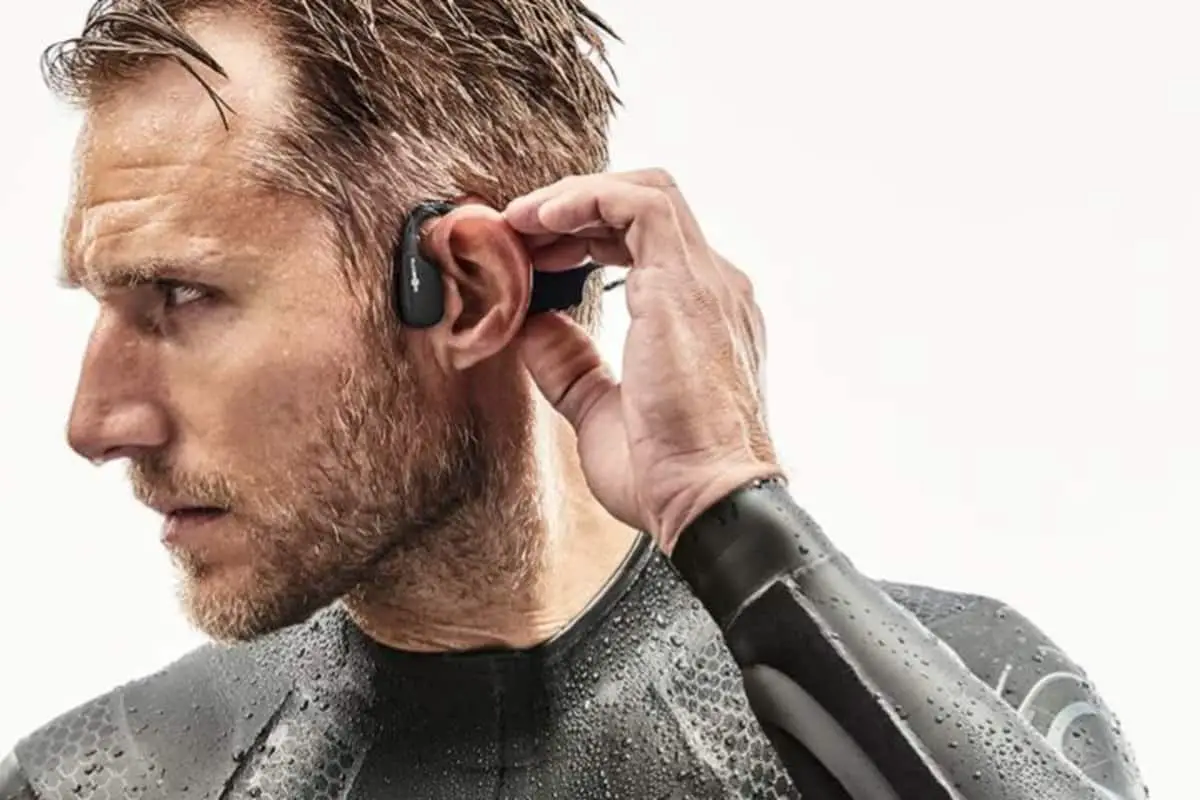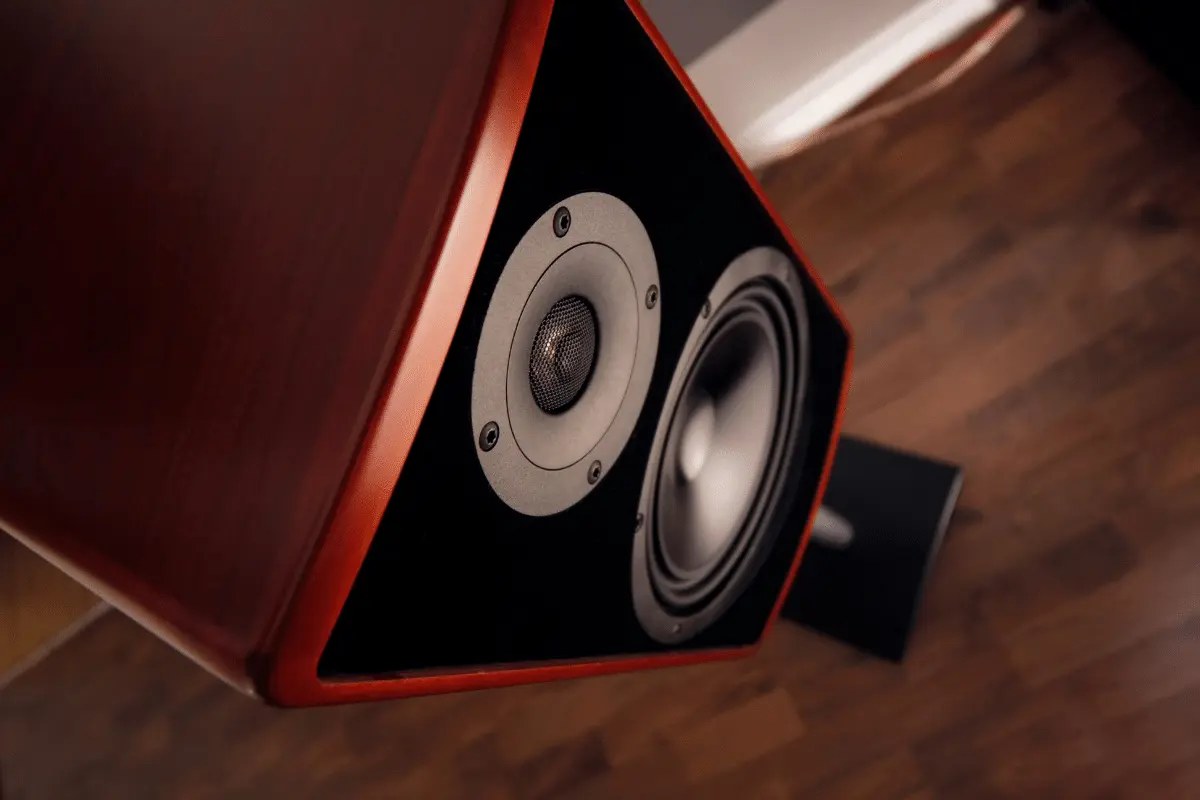Bone conduction headphones have been gaining popularity over the years, as people discover the convenience and benefits of using this audio technology.
However, some individuals have questioned whether bone-conduction headphones work effectively when used together with earplugs.
In this blog post, we will explore the science behind bone conduction headphones, and delve into whether you can use them while wearing earplugs without compromising audio quality.
Join us as we unravel this mystery and provide you with a definitive answer to this issue.
What are bone conduction headphones?
Bone conduction headphones are a type of headphones that allow users to listen to audio without covering or inserting anything into their ears.
Instead, these headphones use bone conduction technology to vibrate the bones in the user’s skull, which then transmits the sound directly to the inner ear.
This technology was initially developed for people with hearing impairments, but it has since become popular among athletes and individuals who want to remain aware of their surroundings while listening to music or taking calls.
Unlike traditional headphones that sit over or in the ear canal, bone conduction headphones can be worn comfortably for extended periods without causing discomfort or pressure on the ears.
However, it is important to note that bone-conduction headphones may not be suitable for individuals with severe hearing impairments or those who prefer high-quality sound-isolating headphones.
How do bone conduction headphones work?
Bone conduction headphones work by bypassing the eardrum and directly relaying sound vibrations to the inner ear through the bones of the skull.
This innovative method makes it possible to hear the audio clearly while keeping ears open to surrounding sounds, which can be especially beneficial for athletes or those with conductive hearing loss.
Rather than transmitting sound waves through the air like traditional headphones, bone conduction headphones use tiny transducers that create vibrations that the bones of the skull pick up, creating unique “audiostrobes” for the user.
By transmitting sound vibrations through the bones instead of the air, bone conduction headphones offer a safer listening experience with minimal risk of damaging hearing.
Do bone conduction headphones work with earplugs?
One of the benefits of bone conduction headphones is that they allow you to hear your music while also staying aware of your surroundings.
However, there may be times when you want some extra noise isolation. That’s where earplugs come in. The good news is that bone conduction headphones and earplugs are compatible.
You can use them together without any problems. This also means you can protect your ears while enjoying your music at the same time.
However, it’s important to use them properly to ensure optimal sound quality and safety.
In the rest of the blog, we’ll explore the advantages and disadvantages of using bone conduction headphones, the types of headphones available in the market, and how to choose the right one for your needs.
Benefits of wearing earplugs with bone conduction headphones
One of the major benefits of wearing earplugs with bone conduction headphones is increased protection for your ears.
Since bone conduction headphones transmit sound through the skull bone rather than through the ear canal, they are ideal for individuals who want to listen to music or audio while also being aware of their surroundings.
By also wearing earplugs, you can reduce the amount of noise entering your ear canal and potentially prevent future hearing damage.
Additionally, using earplugs in conjunction with bone conduction headphones can lead to improved sound quality and clarity, as it helps to eliminate any external noise interference.
Overall, using both earplugs and bone conduction headphones can provide a more immersive and safe listening experience for the user.
Potential downsides to wearing earplugs and bone conduction headphones together
One potential downside to wearing earplugs and bone conduction headphones together is that it may reduce the sound quality.
While bone conduction headphones are designed to bypass the ear canal and directly stimulate the inner ear, wearing earplugs may dampen this effect.
As a result, the sound may not be as clear or as loud as it would be without earplugs.
Additionally, wearing both earplugs and bone conduction headphones may create a sensation of pressure or discomfort in the ear, especially if they are not properly fitted.
It is important to find a comfortable and secure fit to prevent any discomfort or irritation.
Despite these potential drawbacks, many users find that wearing earplugs and bone conduction headphones together can offer a unique listening experience that is both safe and enjoyable.
As with any technology, it is important to use bone conduction headphones and earplugs responsibly and to follow best practices to protect your hearing.
Tips for wearing bone conduction headphones with earplugs for optimal sound quality and safety
To use bone conduction headphones with earplugs, there are several tips to ensure optimal sound quality and safety.
First, choose the right type of earplug that fits comfortably inside your ear while not obstructing the bone conduction transducers.
Foam earplugs are a popular choice due to their ability to mold to the shape of your ear canal.
Second, adjust the volume of the headphones to a safe listening level, as the combined use of earplugs and bone conduction headphones can make it difficult to accurately judge the sound level.
Third, be mindful of your surroundings as bone conduction headphones allow for awareness of ambient noise, but earplugs lessen it.
Finally, if you experience discomfort, discontinue use immediately and adjust the fit of the earplugs or headphones as needed to avoid potential damage to your hearing.
By following these tips, users can enjoy the benefits of bone conduction headphones without compromising their safety or sound quality.
What are the advantages of using bone conduction headphones?
There are several advantages to using bone conduction headphones over traditional earbuds or headphones.
One key advantage is that they don’t use the ears, which can be beneficial for those who have trouble with traditional headphones causing discomfort or even pain in the ear canal.
This design also means that the user can remain aware of their surroundings while listening to music, making them a great option for outdoor activities such as running or cycling.
Another advantage is that bone conduction headphones can help keep the inside of the ear canal clean and hygienic since they do not require earplugs.
Additionally, these headphones can bypass damaged areas of the ear and send sound waves directly to the inner ear, making them a potential solution for those with hearing impairments.
Overall, bone conduction headphones offer a unique and innovative way of listening to music while providing several benefits over traditional headphones.
What are the disadvantages of using bone conduction headphones?
Despite their numerous benefits, bone conduction headphones still have some disadvantages that users should be aware of.
One of the most significant drawbacks is their open design which leads to sound leakage and the possibility of disturbing people around you.
The headphones also rest on the skin above your ears, which can cause pressure leading to skin irritation, especially when worn for extended periods.
Moreover, their battery life may not be as long as other conventional headphones, and they are generally more expensive.
Additionally, the headphones’ sound quality may not be at the same level as other headphones with more powerful drivers.
Despite these downsides, bone conduction headphones are still a great alternative for individuals with conductive hearing loss, and they allow users to hear their surroundings while enjoying their music or media.
Can bone conduction headphones damage your hearing?
One concern that people may have regarding bone conduction headphones is whether or not they can cause damage to their hearing.
Fortunately, there is no evidence to suggest that these headphones are harmful to your hearing.
Because bone conduction headphones work by transmitting sound waves through your bone rather than your eardrum, they are actually less likely to cause damage to your ears than traditional headphones.
That being said, it is always important to use headphones at a reasonable volume and take frequent breaks to give your ears a rest.
If you have concerns about your hearing, it is always a good idea to consult with a healthcare professional.
Are bone conduction headphones suitable for athletes?
When it comes to outdoor activities, bone conduction headphones can be a great companion for athletes.
Due to their unique design, they allow users to stay aware of their surroundings while enjoying their favorite music or podcast.
Athletes who rely on hearing cues, such as cyclists or runners, can benefit greatly from bone conduction headphones as they provide an open-ear design that allows them to hear important sounds such as traffic or approaching pedestrians.
Furthermore, bone conduction headphones are available in waterproof versions, making them ideal for swimmers and other water sports enthusiasts.
Overall, bone conduction headphones are a suitable option for athletes who prioritize their safety while enjoying their favorite audio content during their workouts.
What types of bone conduction headphones are available in the market?
When it comes to bone conduction headphones, there are various types available in the market to cater to different needs.
From open-ear to closed-ear designs, waterproof versions for swimmers, and models that come with extra features such as noise cancelling or built-in microphones for hands-free calling, there is a model for every requirement.
Some notable options in the market include the Aftershokz OpenComm, which is perfect for office use or video conference calls, and the Shokz OpenRun Pro which is specifically designed for athletes.
Additionally, some brands offer bone conduction headphones that are more geared towards those with hearing loss, such as Baha devices.
With the many options available, it’s essential to consider your needs and research thoroughly to find the perfect bone conduction headphones for you.
How to choose the right bone conduction headphones for your needs?
When choosing the right bone conduction headphones for your needs, there are several factors to consider.
Firstly, it’s crucial to ensure that the transducers are of high quality and an appropriate size for your ears. Additionally, adjustable headphones are ideal for a customizable fit, especially for athletes who engage in intense physical activity.
Secondly, look for a headphone model that is compatible with your device’s Bluetooth technology. Furthermore, consider the headphone’s battery life, sweat resistance, and level of vibration at higher volumes.
Lastly, it’s essential to try a few pairs to find the perfect fit that offers optimal sound quality and safety, especially when wearing earplugs with bone conduction headphones.
Overall, choosing the right bone conduction headphones depends on your individual needs, preferences, and budget.






Leave a Reply
You must be logged in to post a comment.